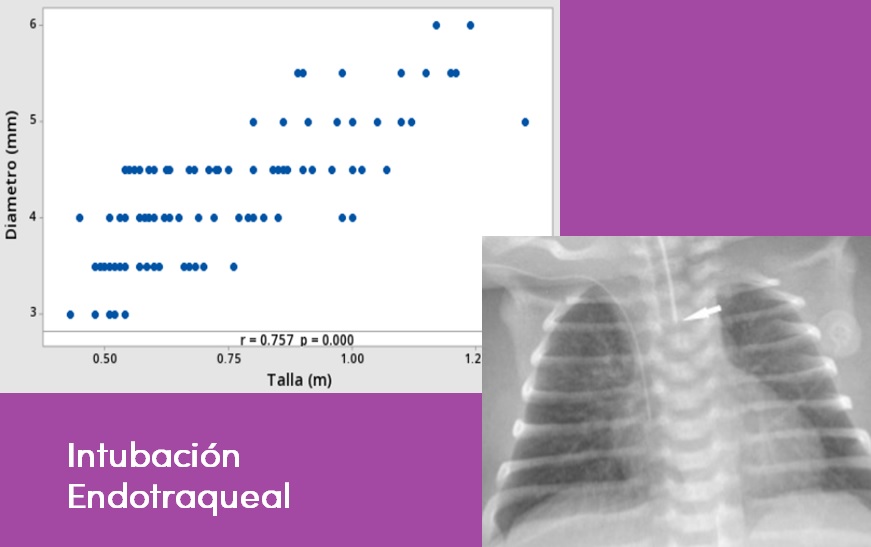Predictive variables for endotracheal tube size in pediatric pa-tients in the intensive care unit Original Research
Main Article Content
Abstract
Introduction: A major cause of pediatric morbidity and mortality is airway compromise; thus, proper intubation is an important life-saving procedure. The objective of this study was to determine the predictive variables of diameter and length of the endotracheal tube in intubated children in the intensive care area of the Vicente Corral Moscoso Hospital, Cuenca, Ecuador.
Methods: In the present observational study with a non-probabilistic census-type sample, we measured the endotracheal tube diameter (ETD) and used X-ray to determine insertion depth and endotracheal tube length (ETL). We used correlation and linear regression analysis to predict ETD and ETL based on age, weight and height of children 1 to 120 months of age. Non-parametric statistics were used.
Results: There were 102 cases, constituting an intubation frequency of 30.6%, and the most frequent reason was respiratory disease. We establish statistically significant prediction equations for ETD (R2 = 0.65, P = 0.0001) and ETL (R2 = 0.65, P = 0.0001). ETD = 3.54 + 0.14 * (age years) + 0.04 * (weight kg). ETL = 10.36 + 0.31 * (age years) + 0.18 * (weight kg).
Conclusions: The diameter and length of the endotracheal tube are correlated with patient-specific variables, such as age and weight.
Downloads
Article Details

This work is licensed under a Creative Commons Attribution-NonCommercial 4.0 International License.

